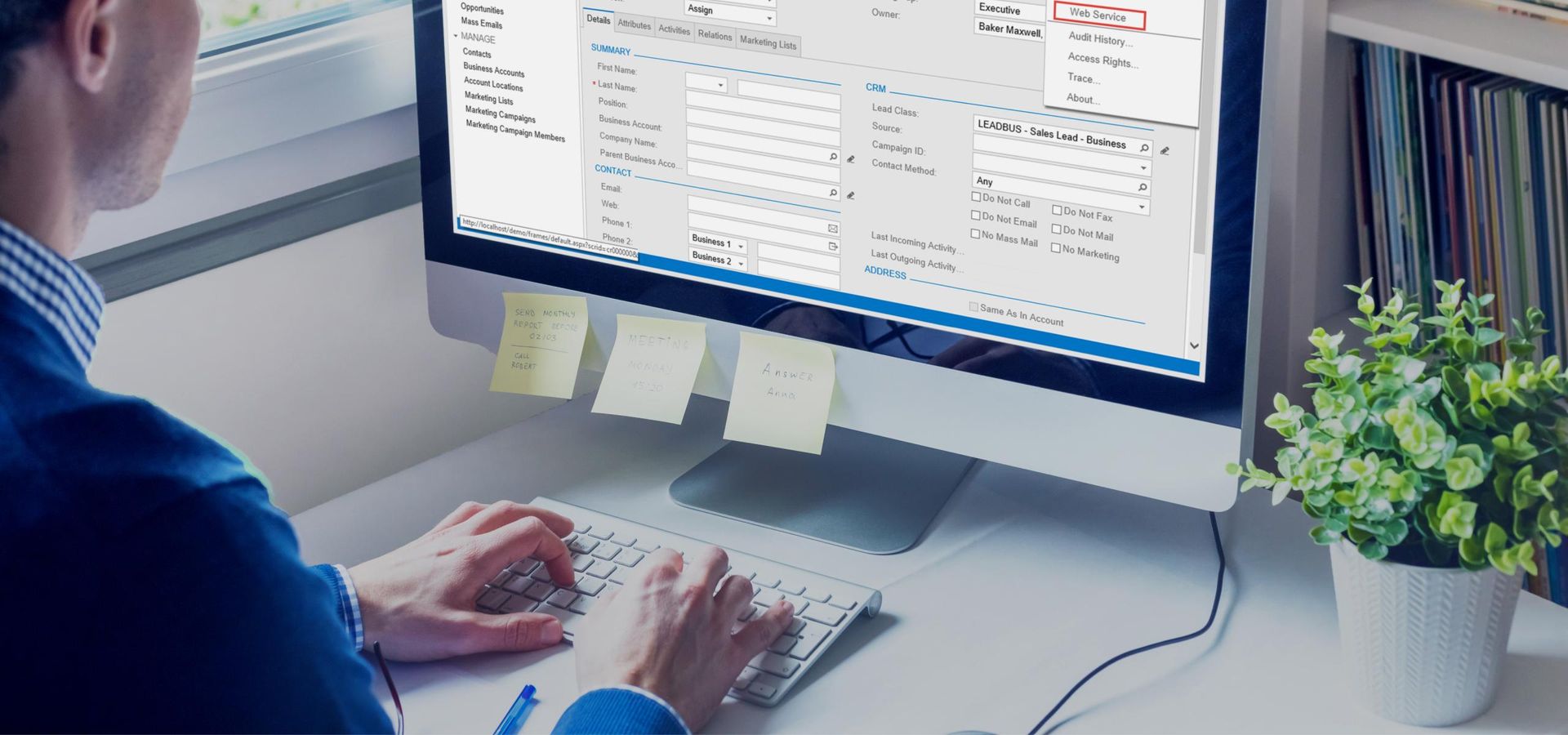
Acumatica integration
We are Acumatica ERP experts
Since 2013, Itransition has been delivering enterprise software based on the Acumatica ERP system—a suite of integrated business management apps. We tailor solutions covering such areas of enterprise operations as financial management, customer relationship management, project accounting, analytics, and reporting. Our Acumatica-certified technical specialists, business consultants, and project managers leverage the extensive Acumatica knowledge hub and development toolsets to build custom solutions on top of the platform’s out-of-the-box features. Our team also provides user adoption training and supports deployed Acumatica solutions continuously.
Partner voice
We’re very pleased with Itransition’s professionalism, the quality of their services and operational efficiency have been critical components in many projects. Itransition has proven to be a flexible partner, capable of adjusting approaches and priorities to achieve complex goals and deliver solutions tailored to our customers’ demands. We highly appreciate their work and recommend them as a vendor delivering high-quality digital services & solutions for various sectors with industry specifics in mind.

VP Partner Solutions, Acumatica
Acumatica customization
With our broad experience in deploying and customizing platform-based software, we apply our skills to turn Acumatica’s modules into integrated enterprise applications with unique design and feature sets. When out-of-the-box capabilities aren't enough, we extend the Acumatica ERP platform with custom programming objects (data classes, code libraries, business logic controllers, etc.) and non-programming ones (reports, data export and import scenarios, access rights, etc.). Engaging in Acumatica development projects, we tune all the functional modules across different editions. We’ve generated our expertise from practice, tailoring the following Acumatica components:

Construction accounting software
- Subcontracts
- Joint checks
- Project management
- Commitments
- Retainage
- Change management
- Budgets
- Job costing
- Project billing
Project accounting
- Project cost tracking
- Time and expense management
Distribution management
- Purchase order management
- Sales order management
- Requisition management
- Warehouse management
Financial management
- Accounts receivable
- Accounts payable
- General ledger
- Tax management
- Currency management
Customer relationship management
- Sales automation
- Service and support automation
- Self-service portals
Field service edition
- Service management
- Equipment management
Analytics and reporting
- Acumatica generic inquiries for reporting and analytics
- Acumatica reporting
- Acumatica dashboards
Adapt Acumatica to your business with our customization services
Acumatica integration in detail
We provide Acumatica integration services to connect Acumatica-based solutions with internal infrastructures and enterprise systems, be they cloud, on-premises, or hybrid. We integrate solutions with third-party applications using ready-made web APIs or creating custom connectors. Along the way, we perform technical audit of Acumatica deployments to optimize their business logic, verify the stability and security of integrations in place, and redesign them if necessary.
- Bidirectional data transfer
- Real-time data import and export
- Manual and scheduled data synchronization
- Automated and manual conflict resolution
When you face broader integration challenges, our team is here to provide their professional assistance. We will check the stability and accuracy of integrations across your entire software environment, implement required enhancements, or redo integrations of subpar quality.

Mobile Acumatica ERP
We understand how important it is for business users to keep control over their workflows from any location and on any device. To meet these demands, we develop mobile solutions and extend the built-in functionality of Acumatica mobile apps with the help of the Acumatica Framework coupled with established mobile development tools and languages.

Make your Acumatica project a success with Itransition
Acumatica ERP: project lifecycle
Itransition is a full-stack Acumatica developer able to jump on a project at any stage. We offer all-round audit and technology consulting, set up and optimize development and QA processes. We bring established project management methodologies, continuous integration and delivery practices, and quality assurance as integral parts of our projects.
Analysis
Analysis
Evaluating business processes Gathering and analyzing requirements
Mapping requirements to the Acumatica features Modeling operational and business workflows
Development
Development
Configuring the out-of-the-box Acumatica features Customizing the Acumatica modules
Developing custom feature sets Designing and implementing custom connectors
Migration
Migration
Setting up the Acumatica deployment environment Migrating content, data, and workflows to Acumatica
Developing custom feature sets Designing and implementing custom connectors
Testing
Testing
Security assessment Deployment audit
Manual and automated testing Performance and integration testing
Support
Support
Supporting and improving the platform continuously Monitoring and troubleshooting Acumatica solutions
Training user groups to use and manage Acumatica Sharing Acumatica best practices
